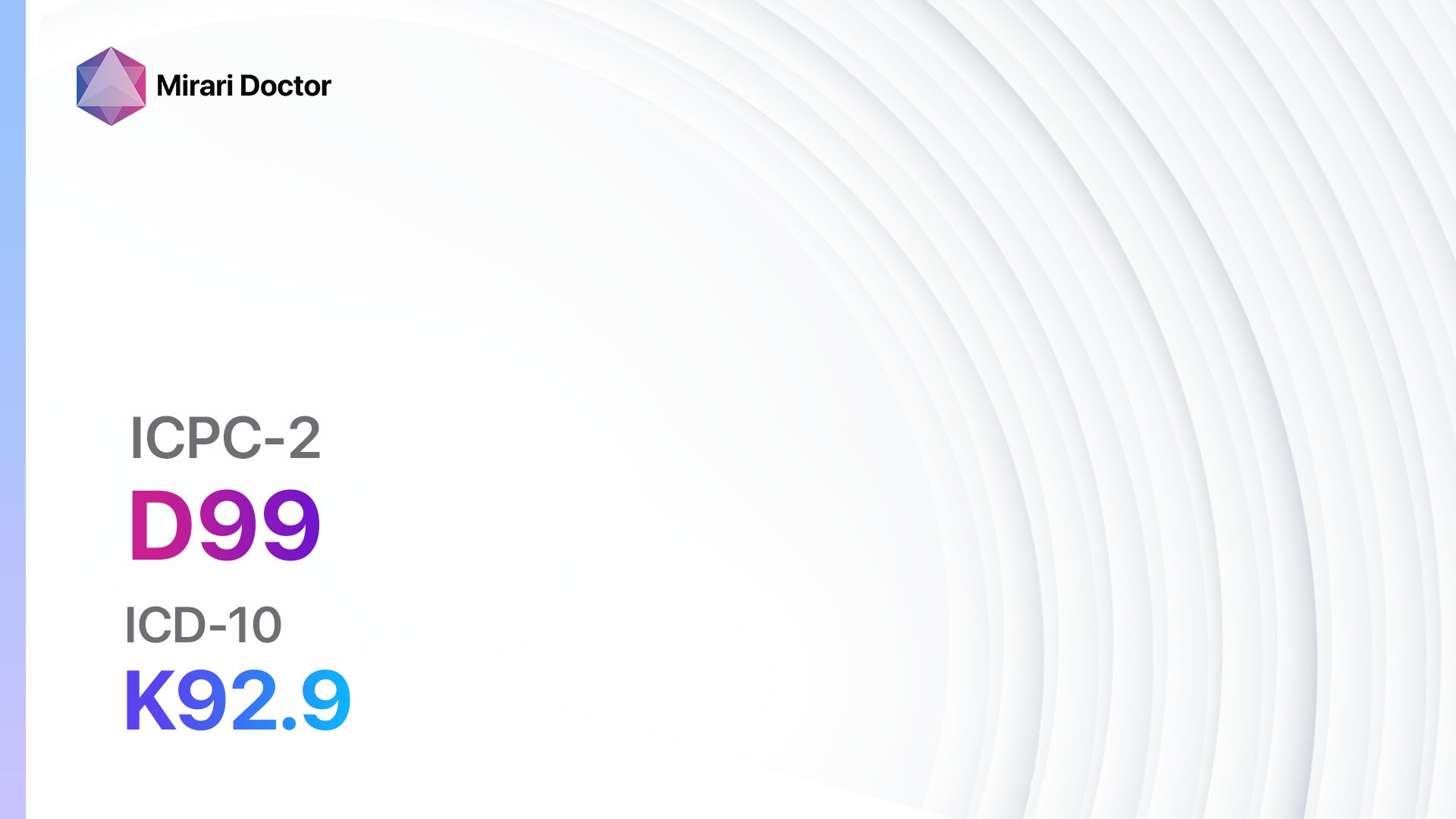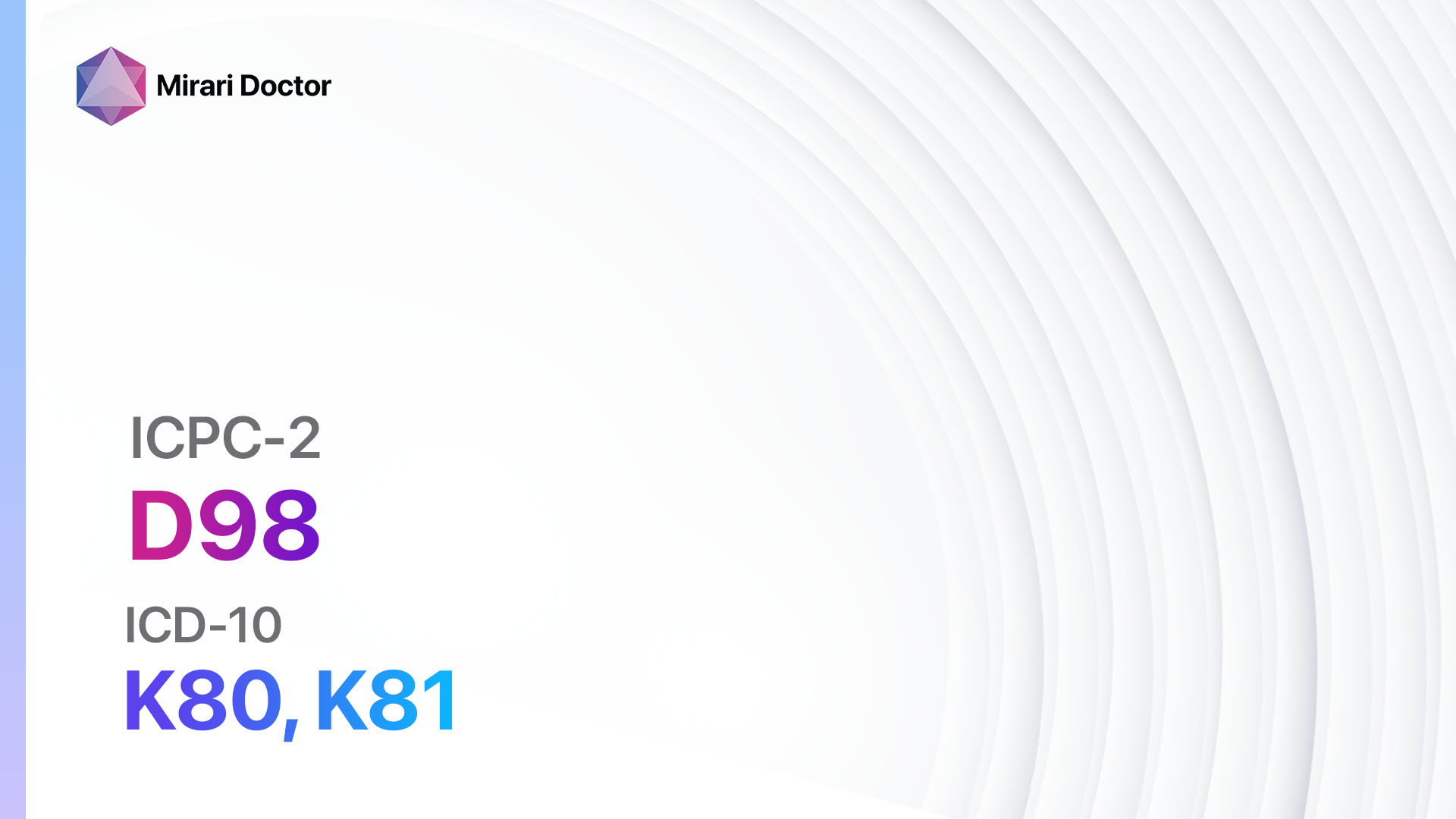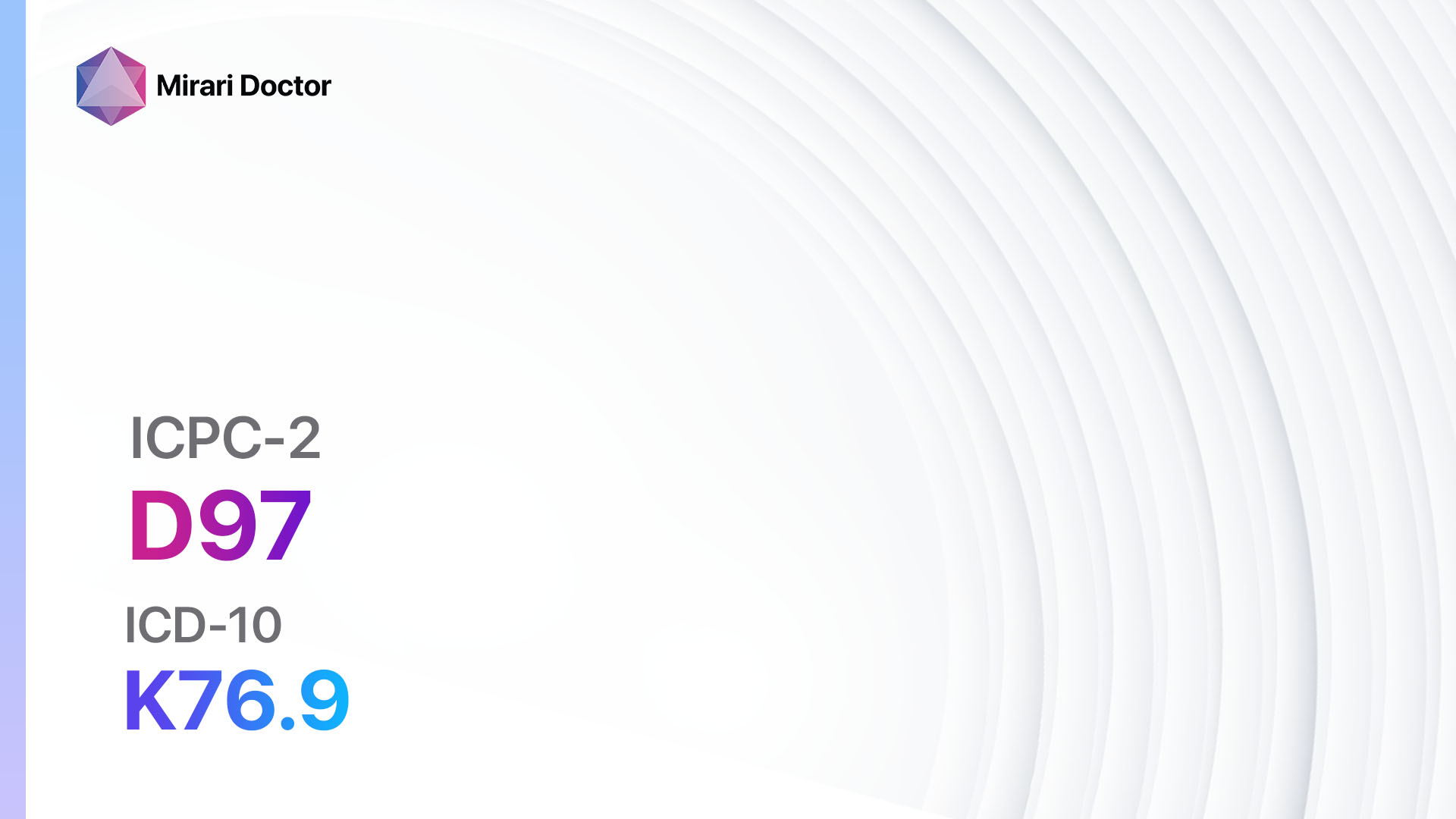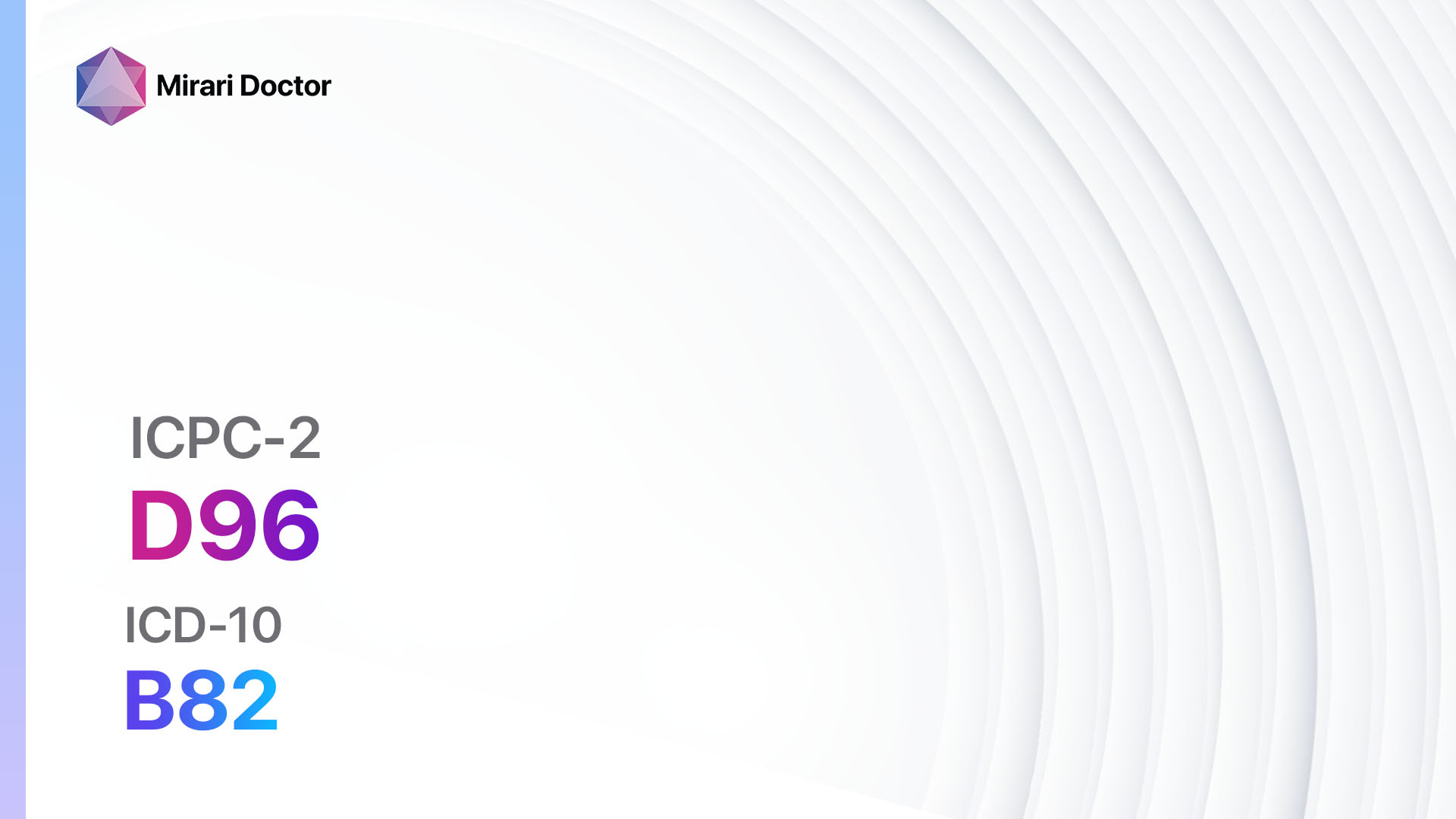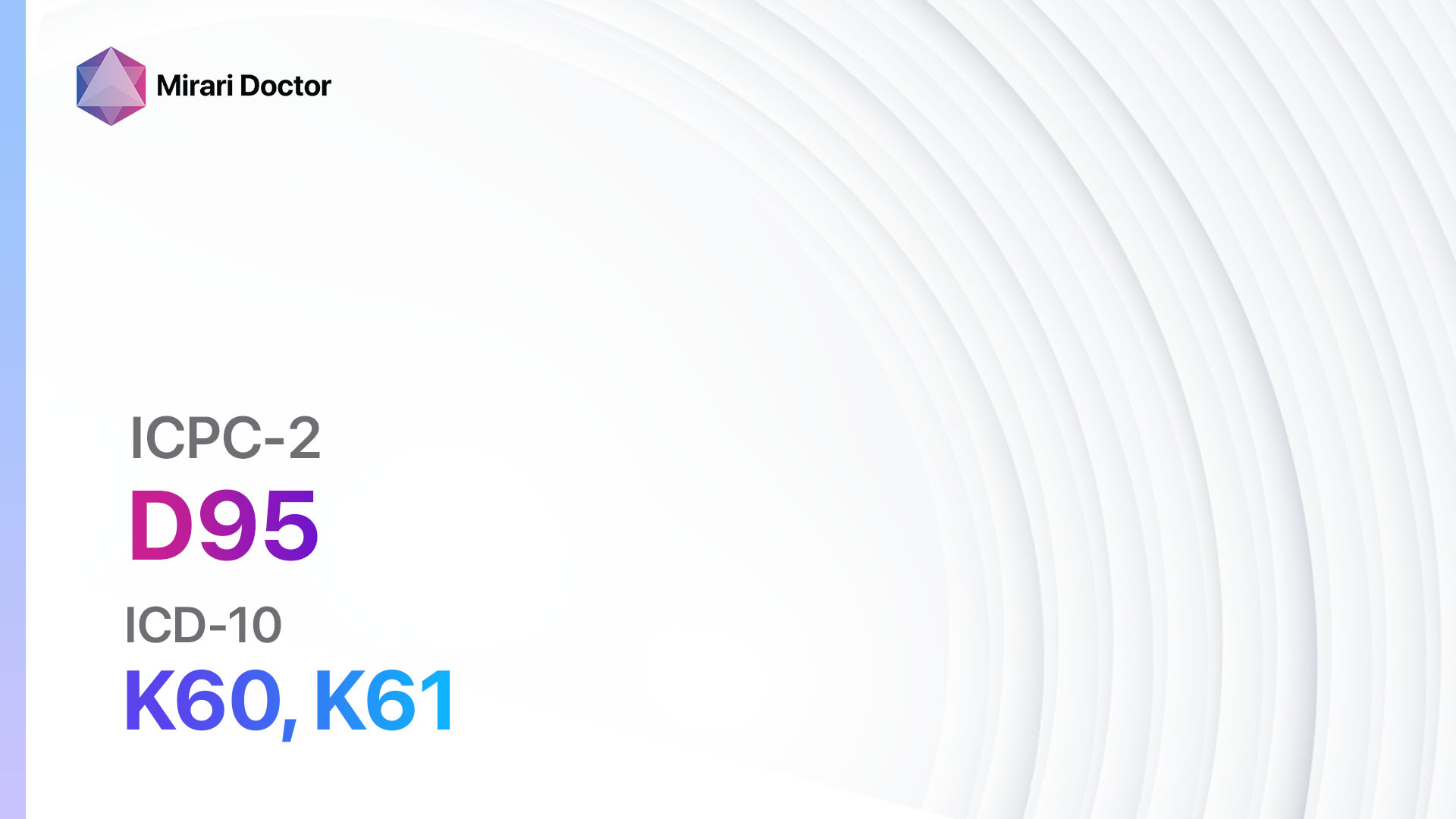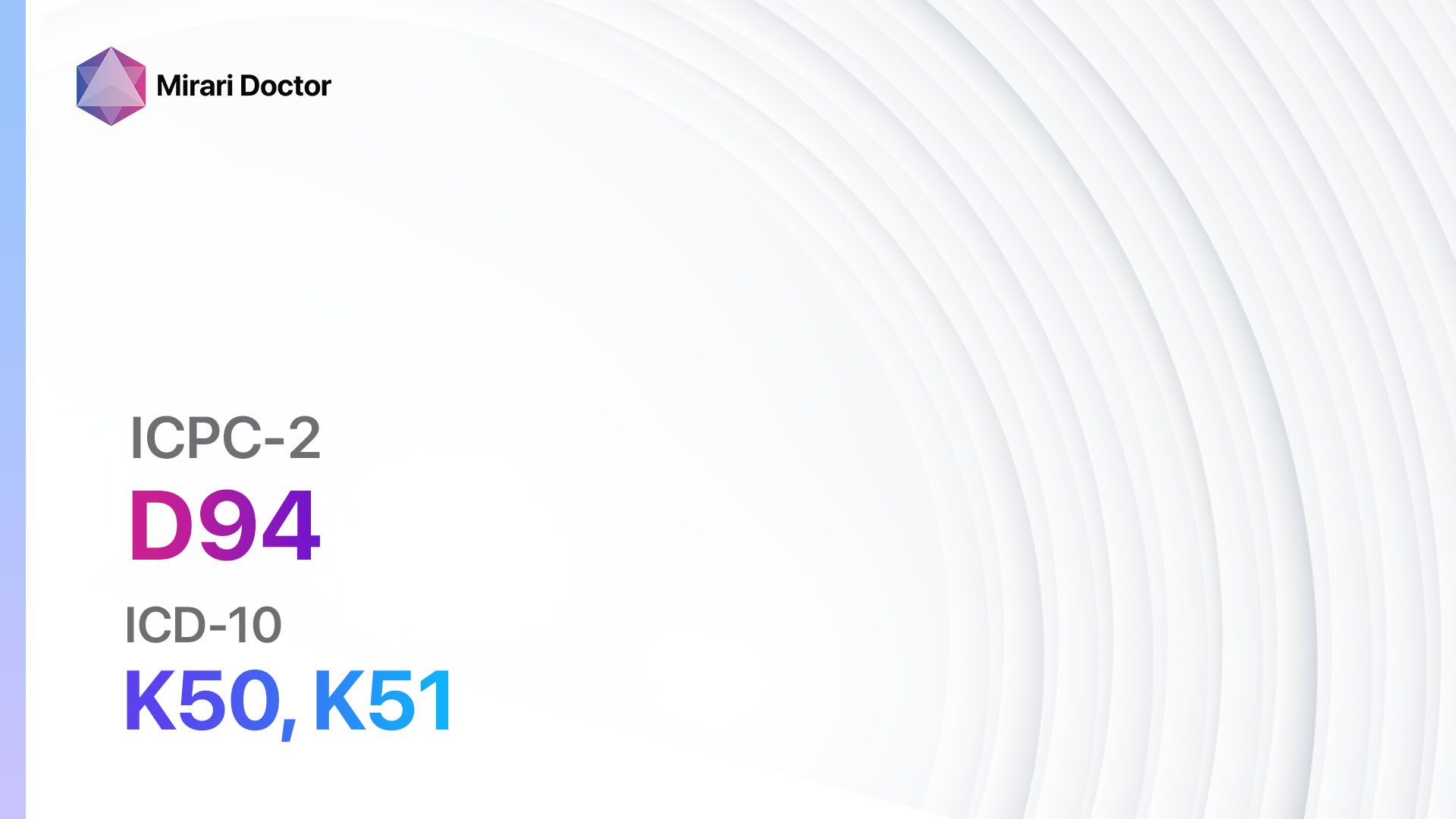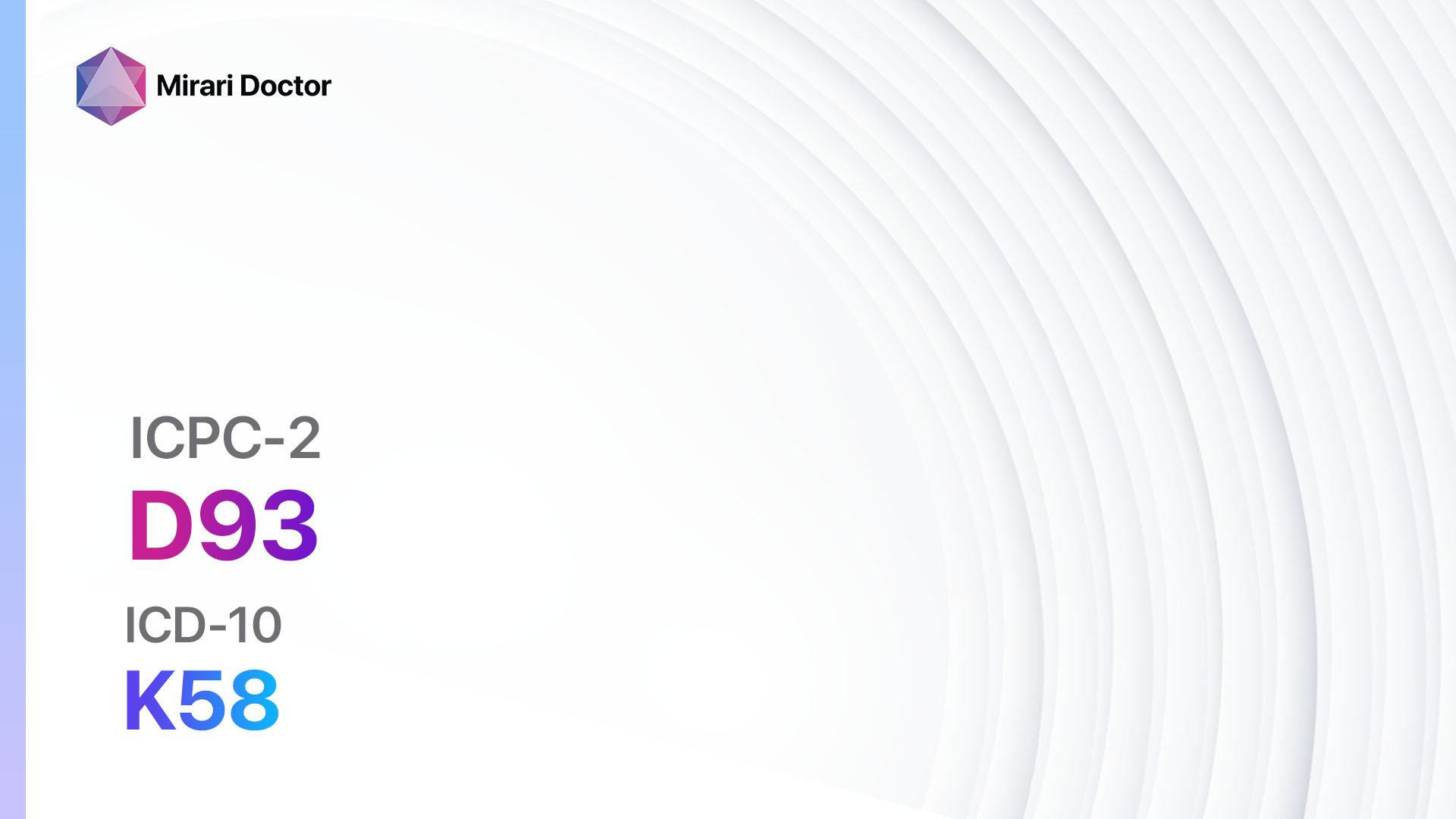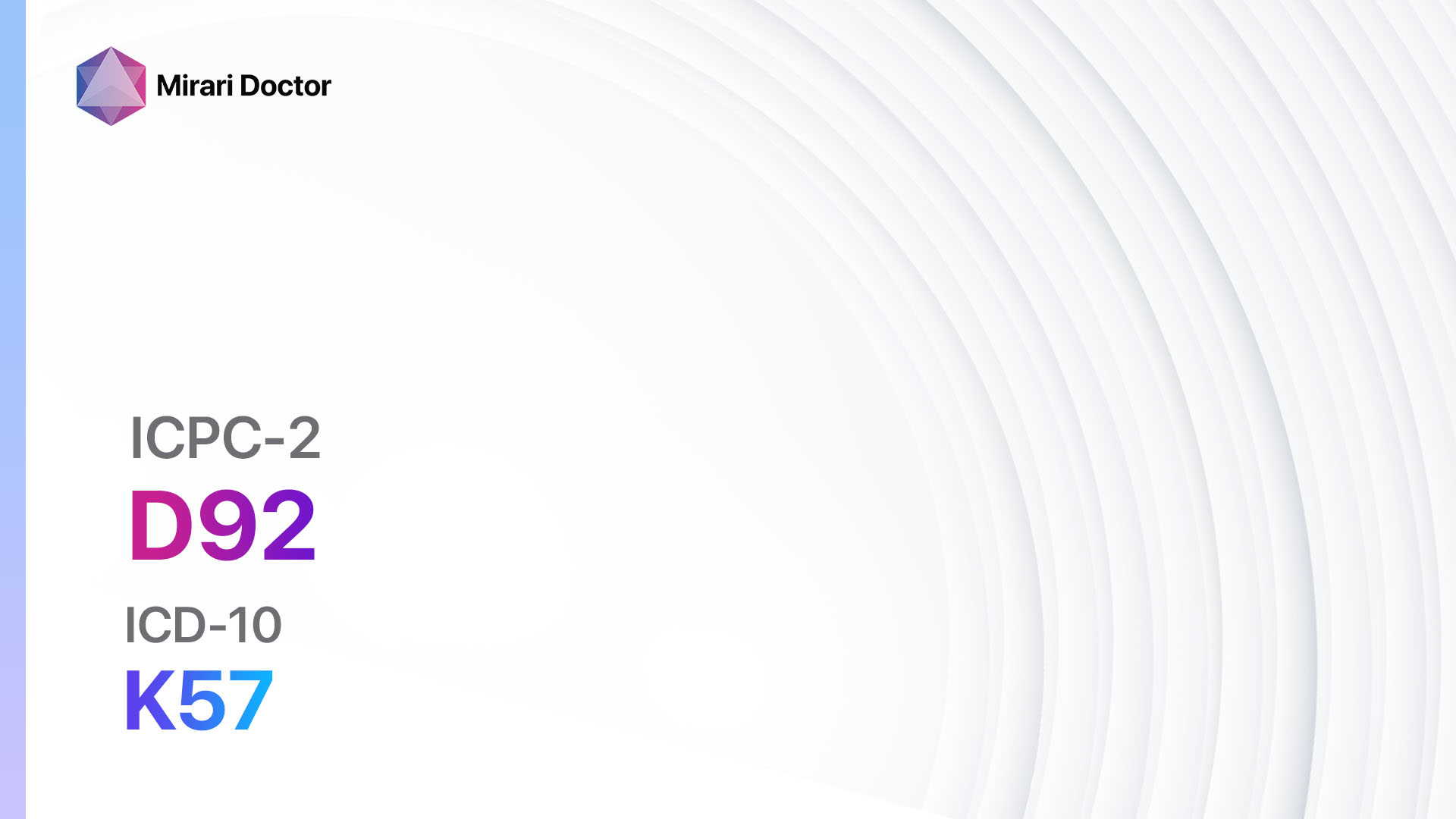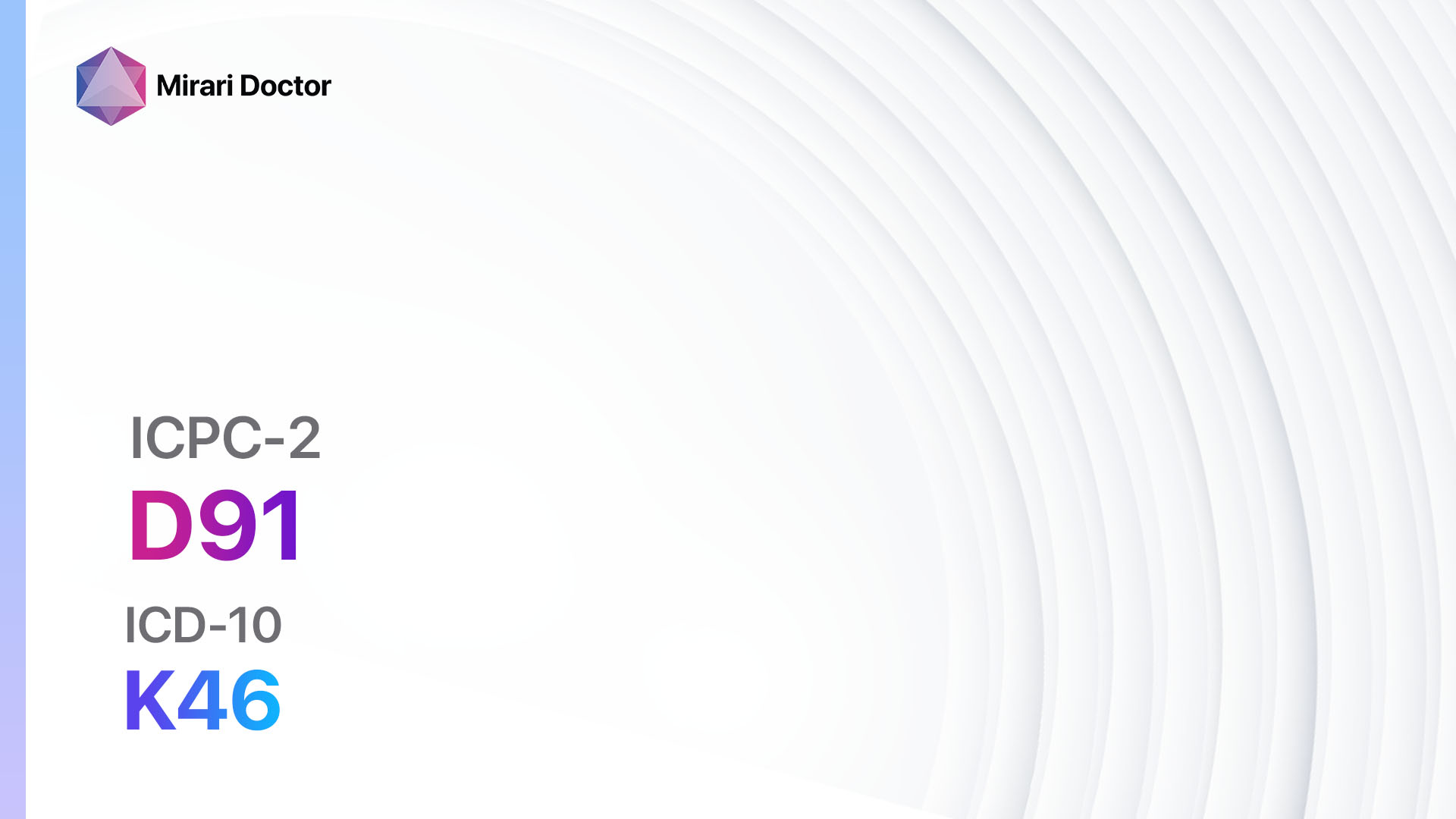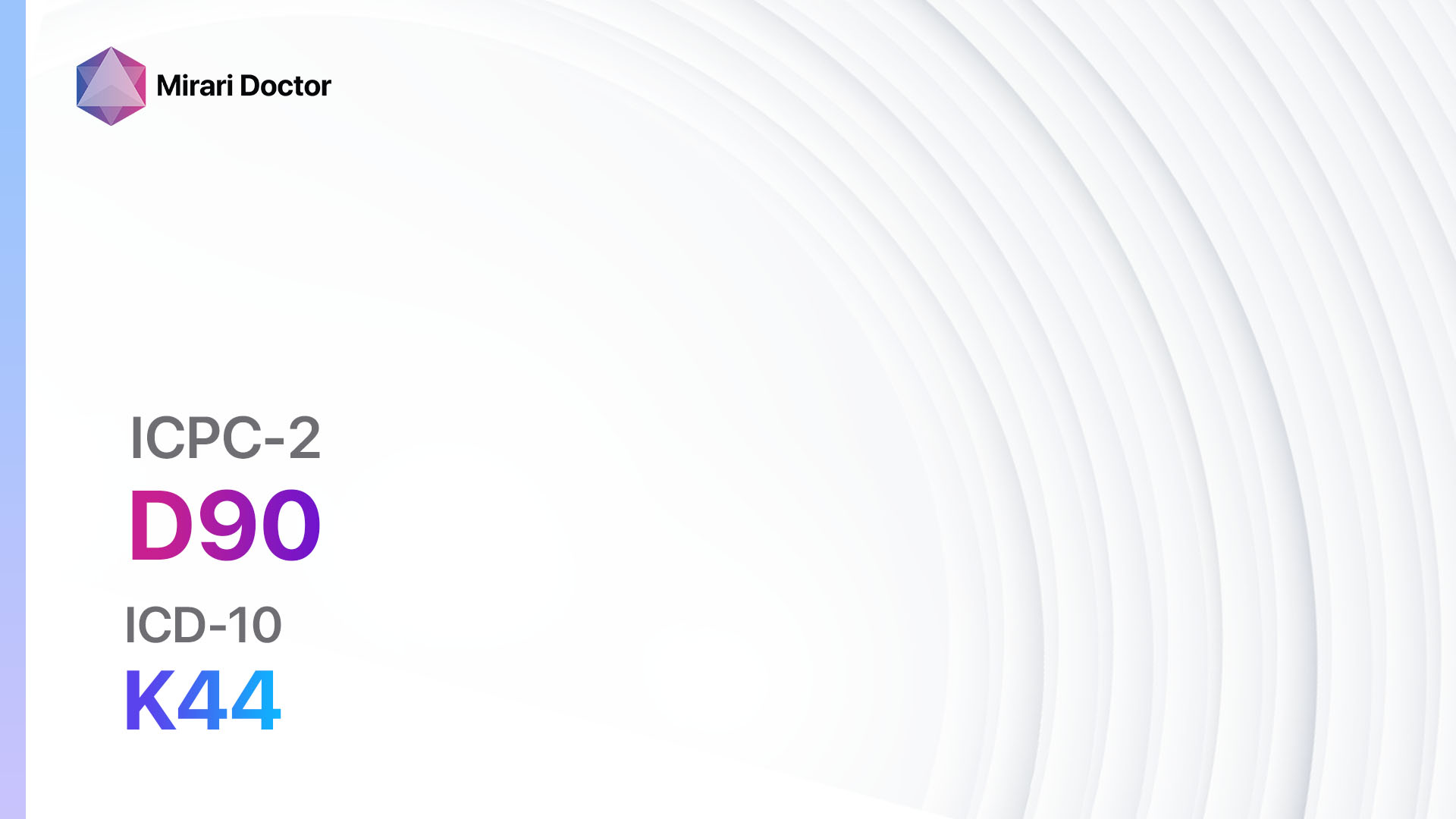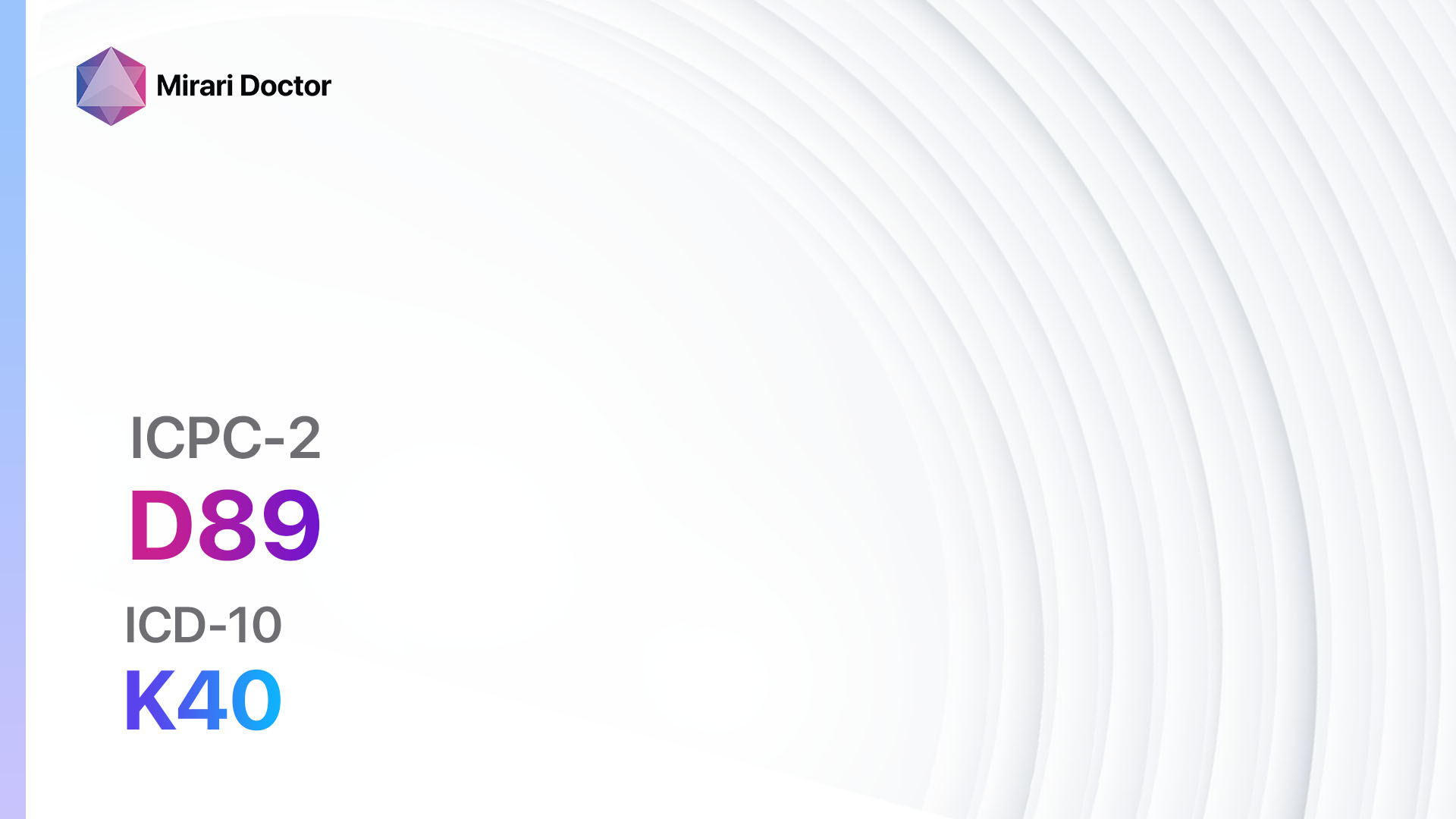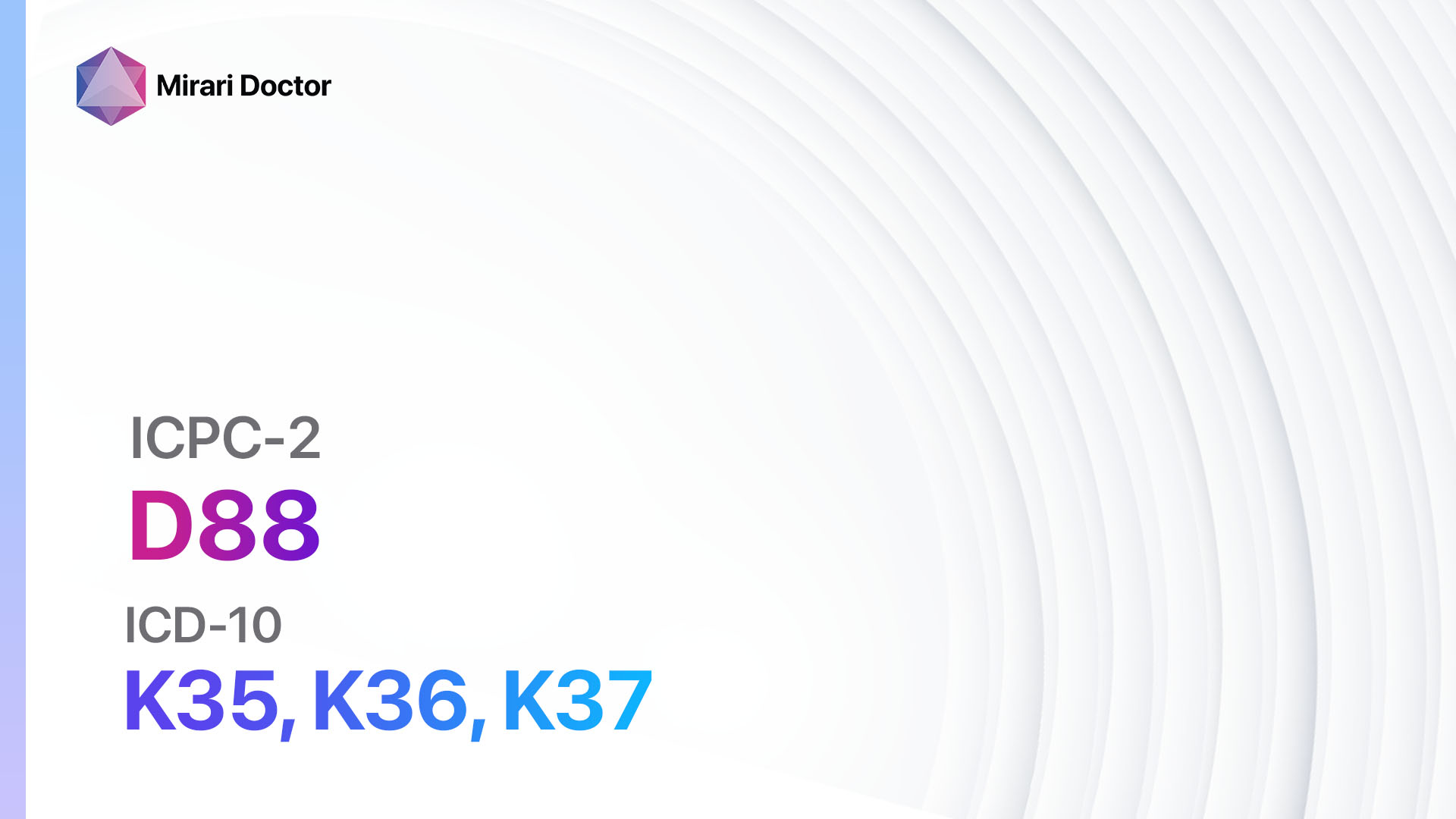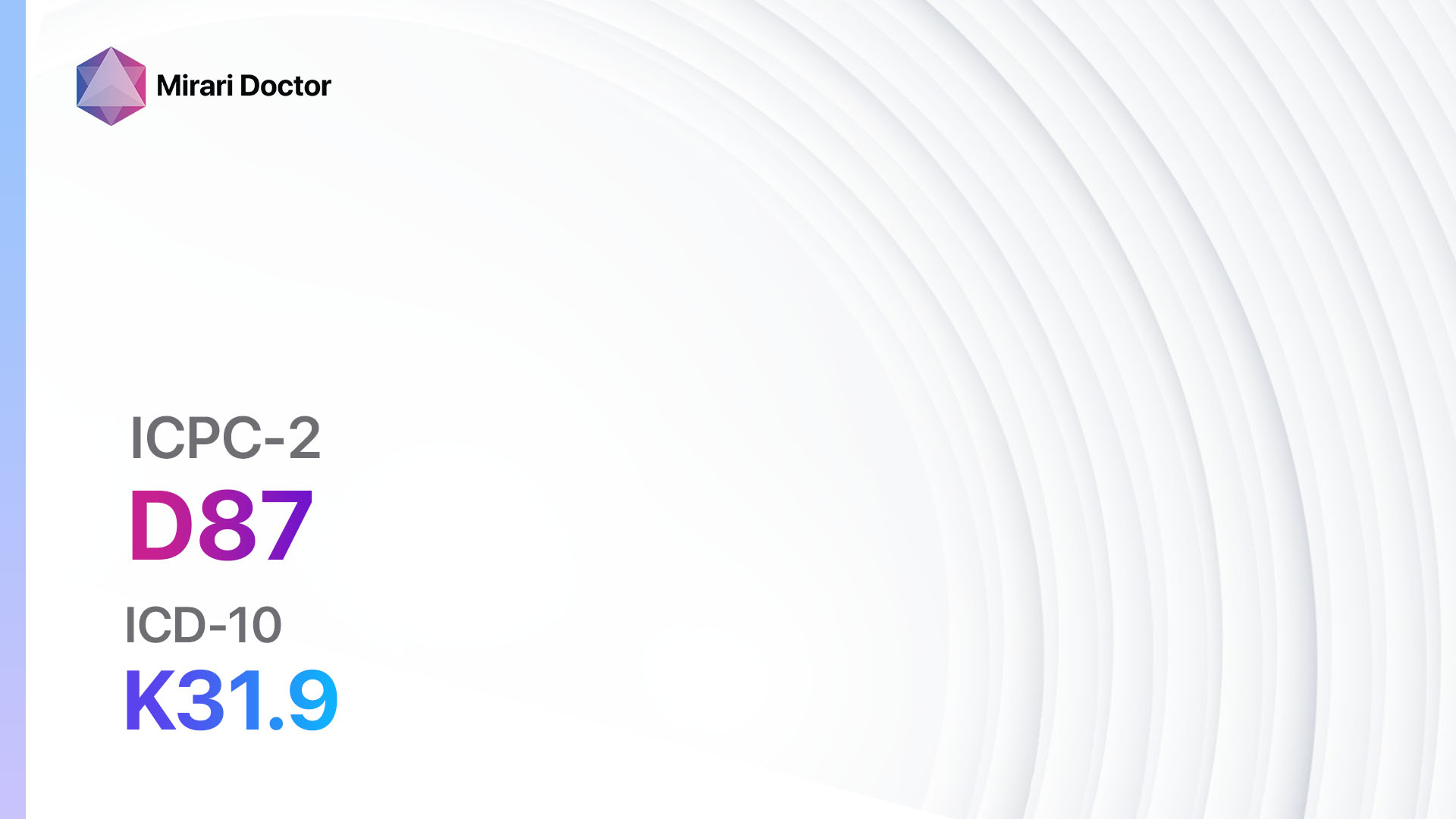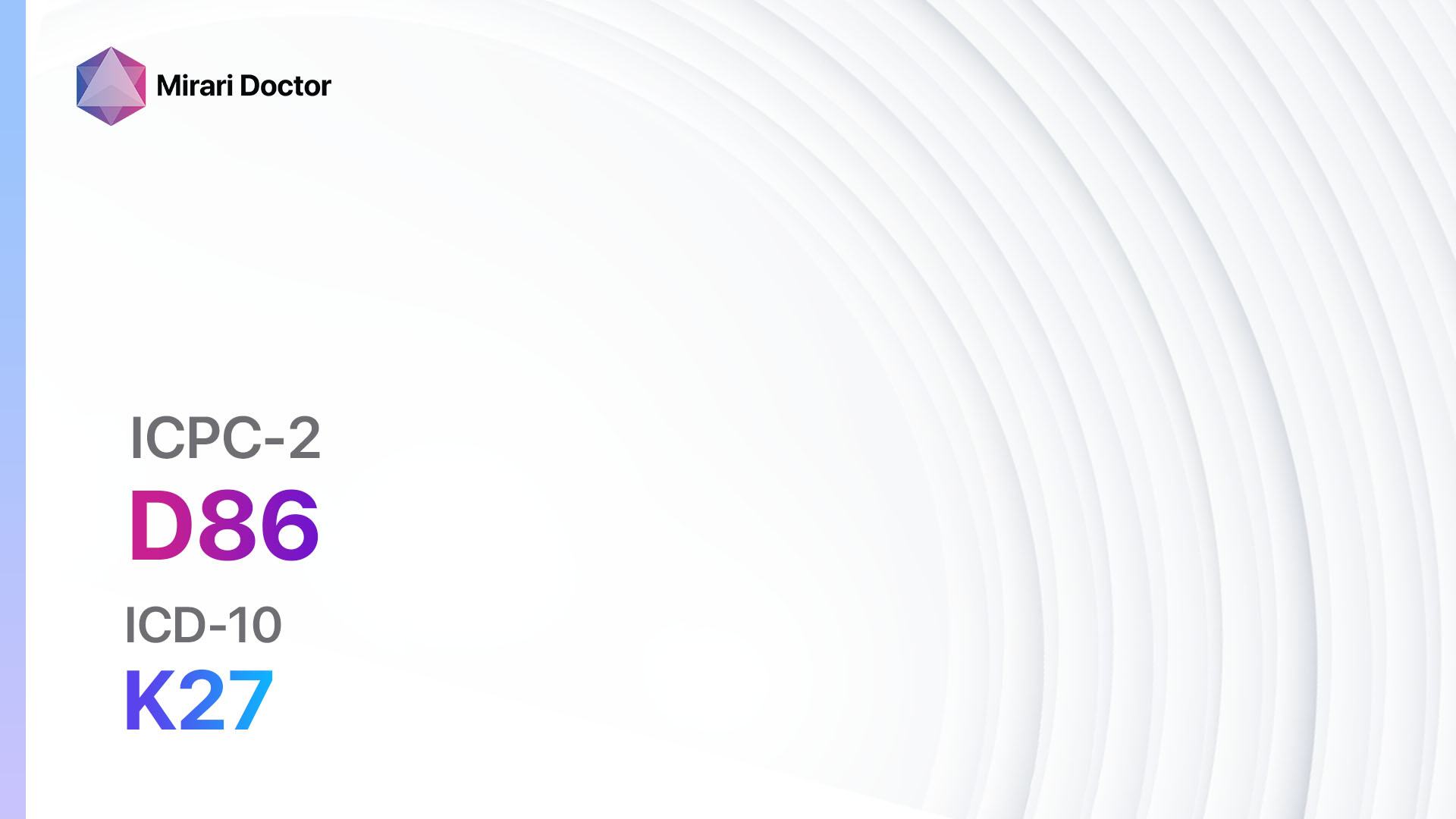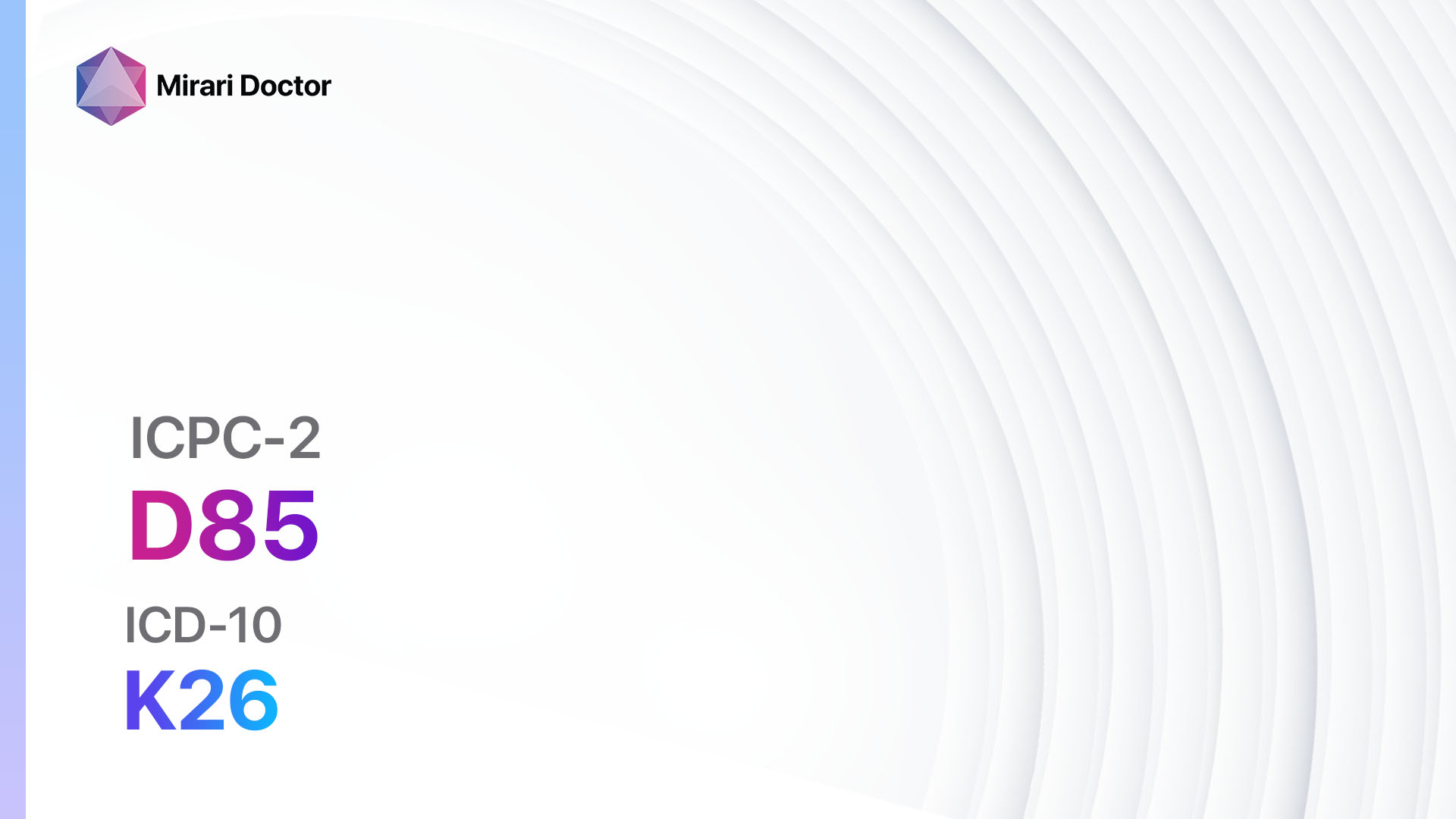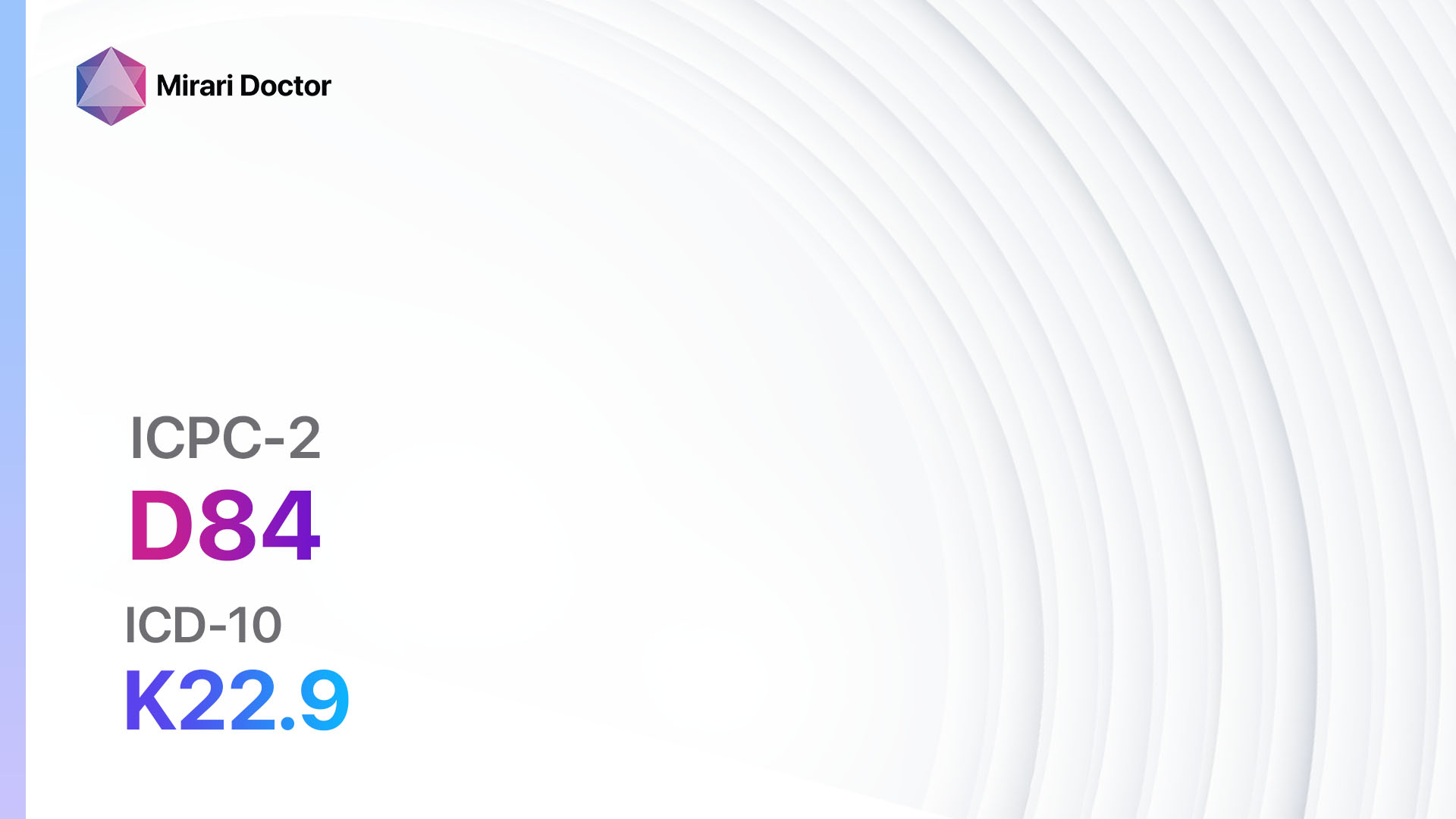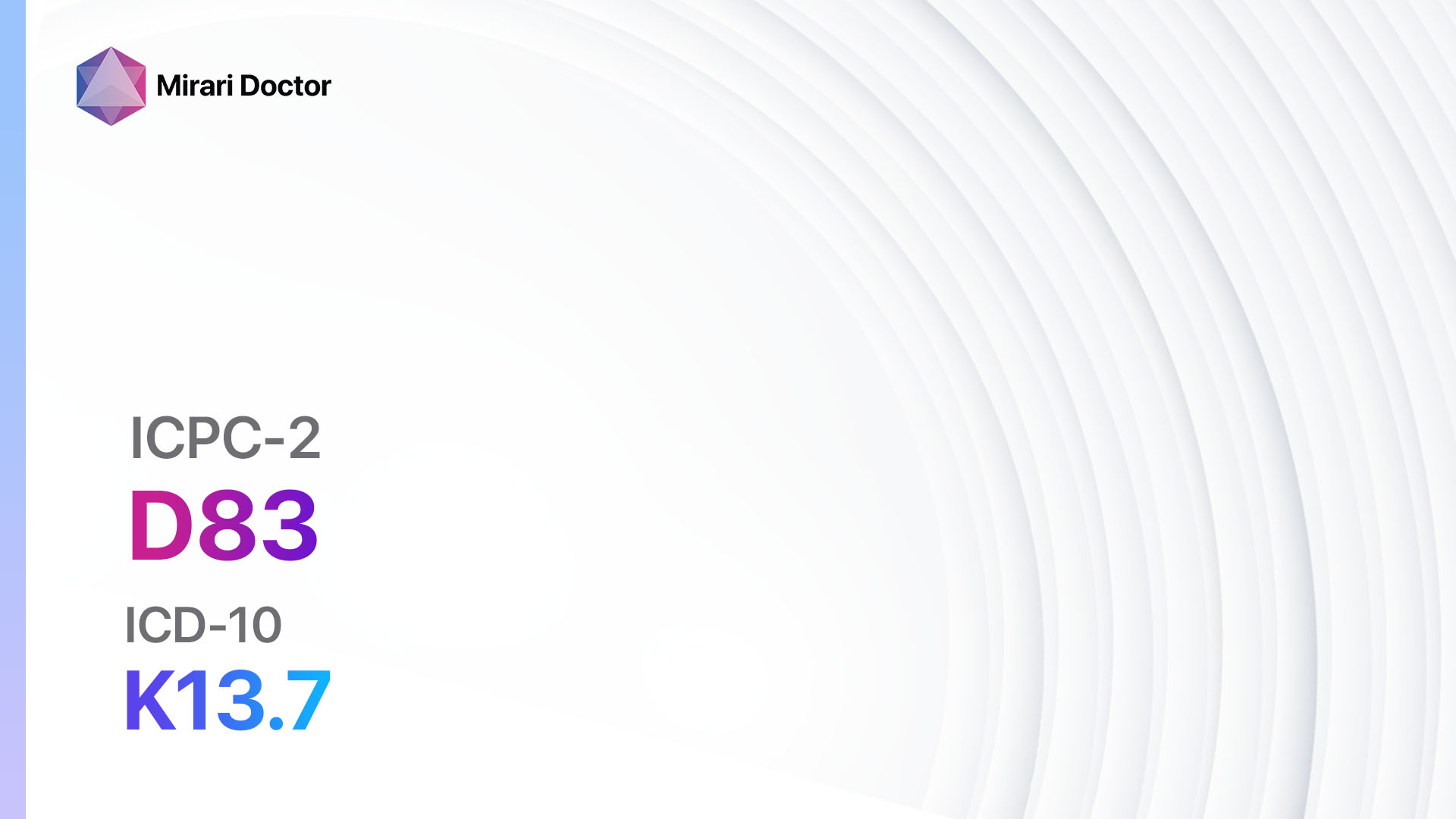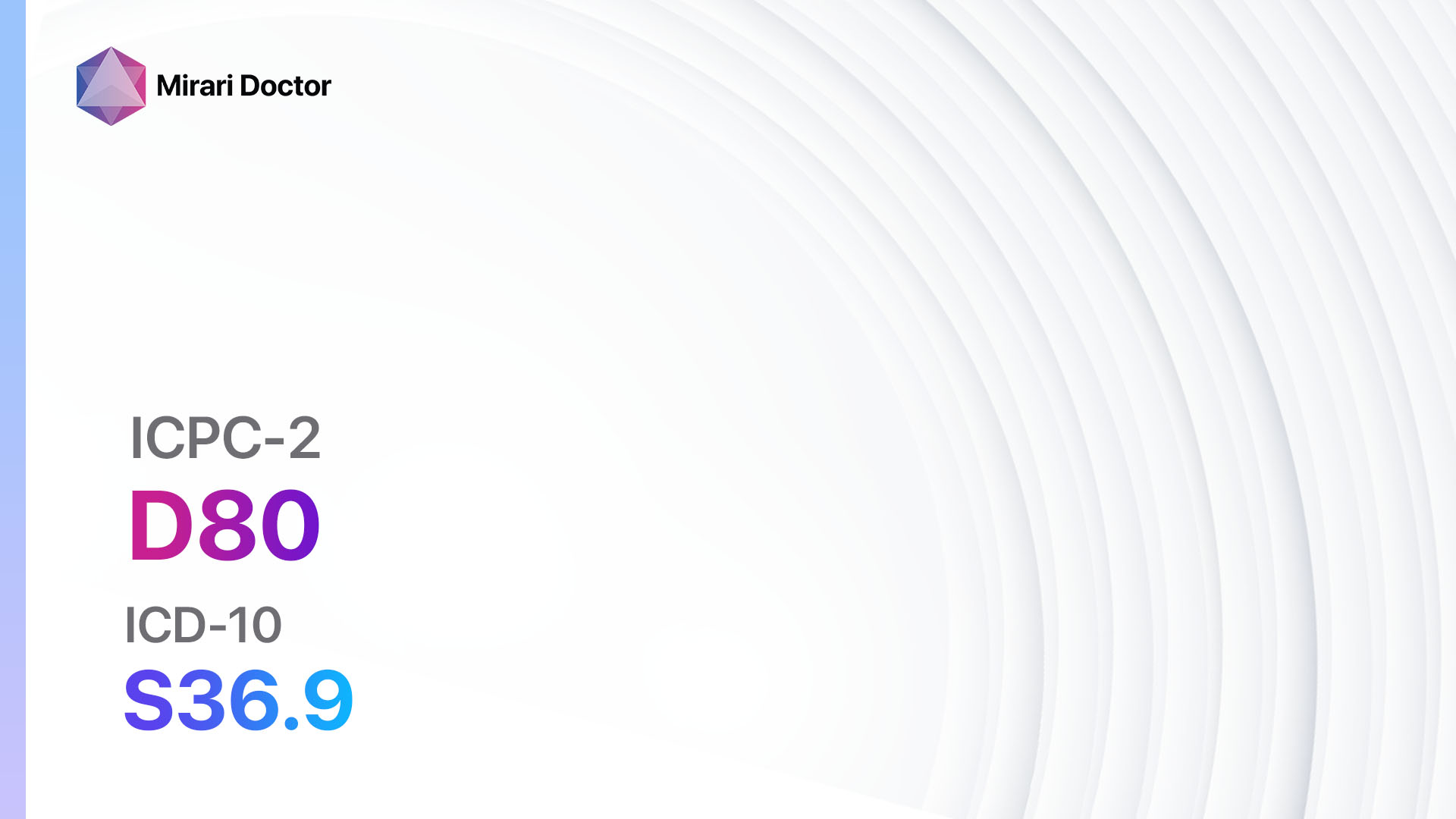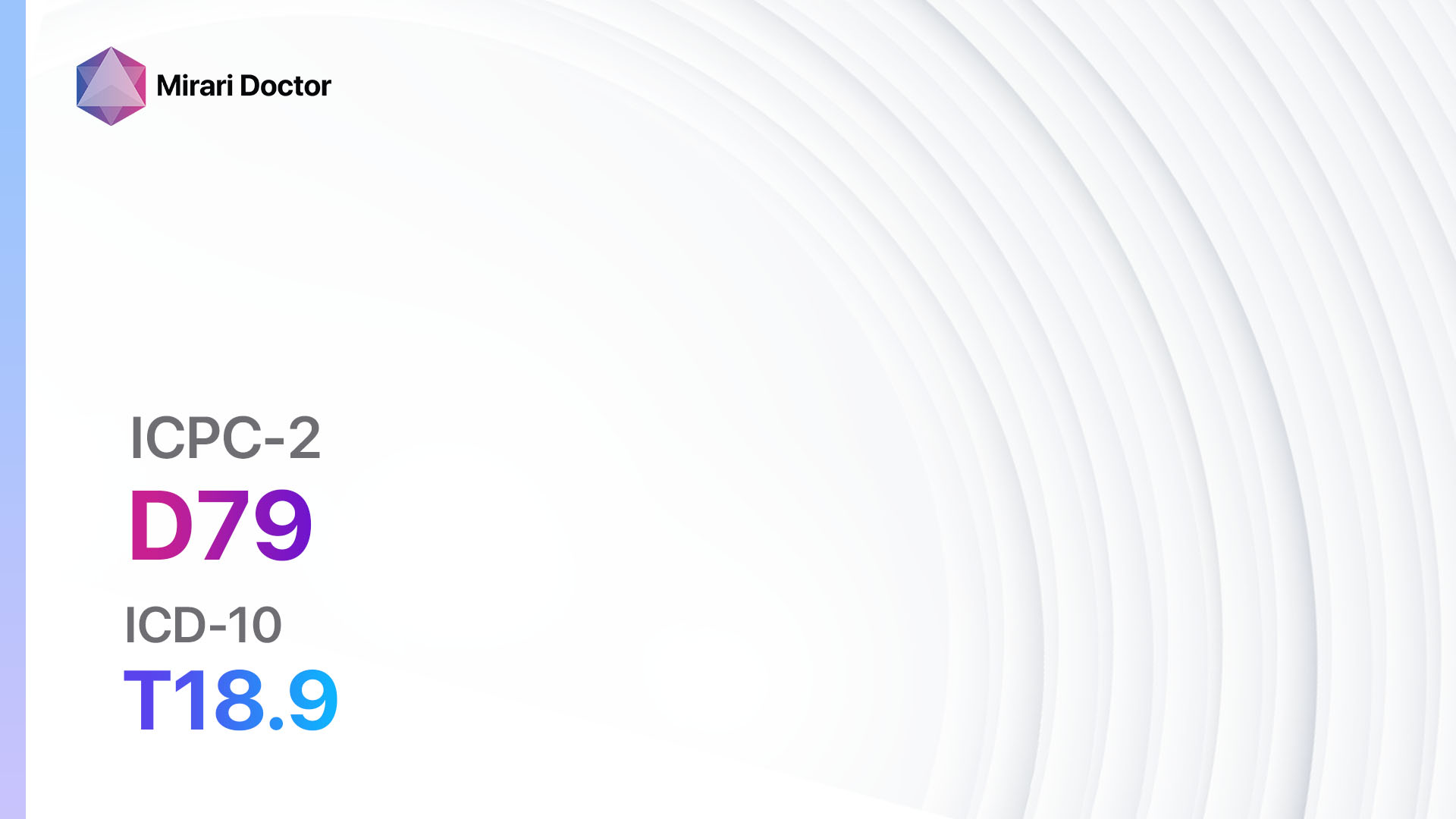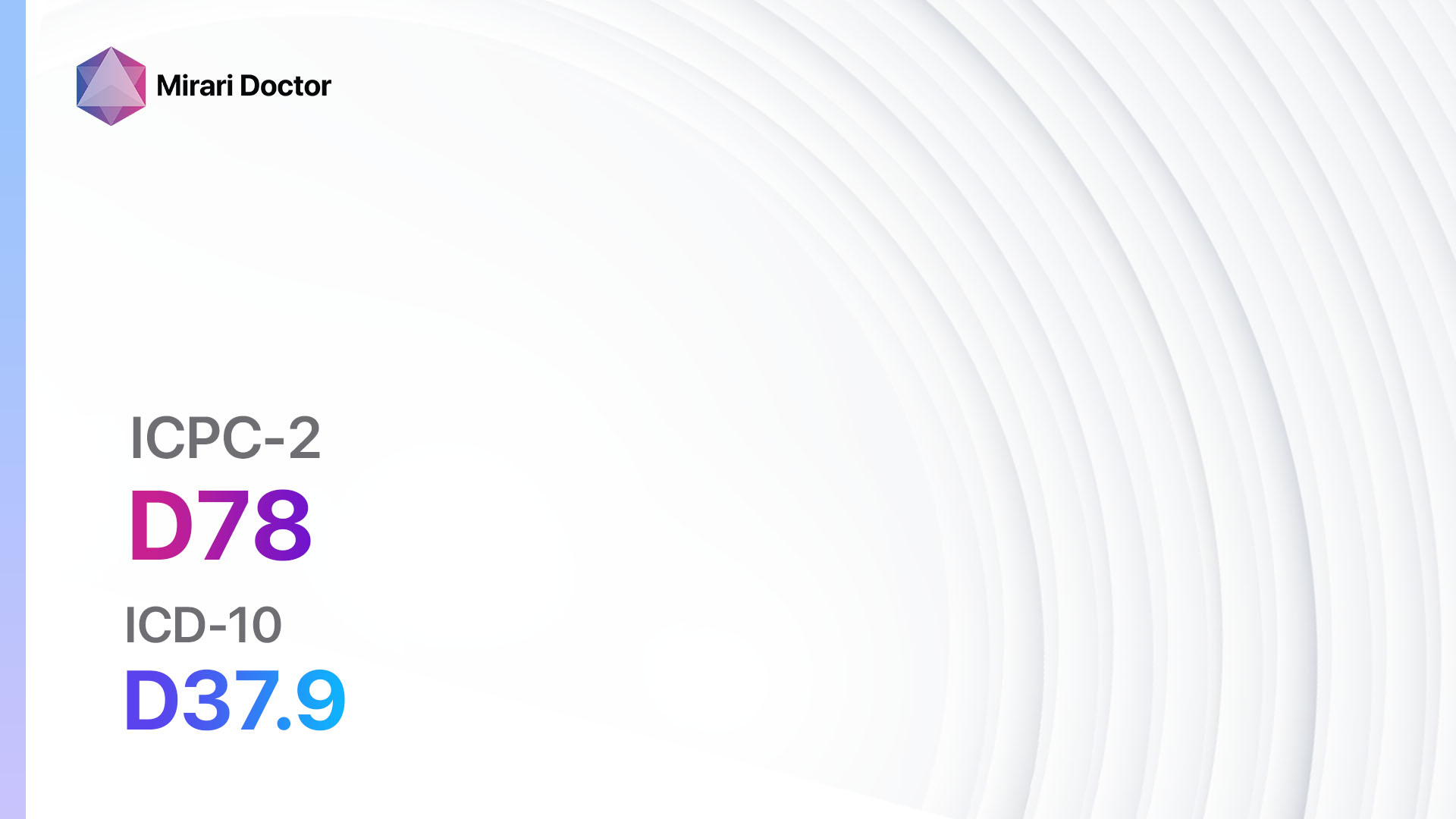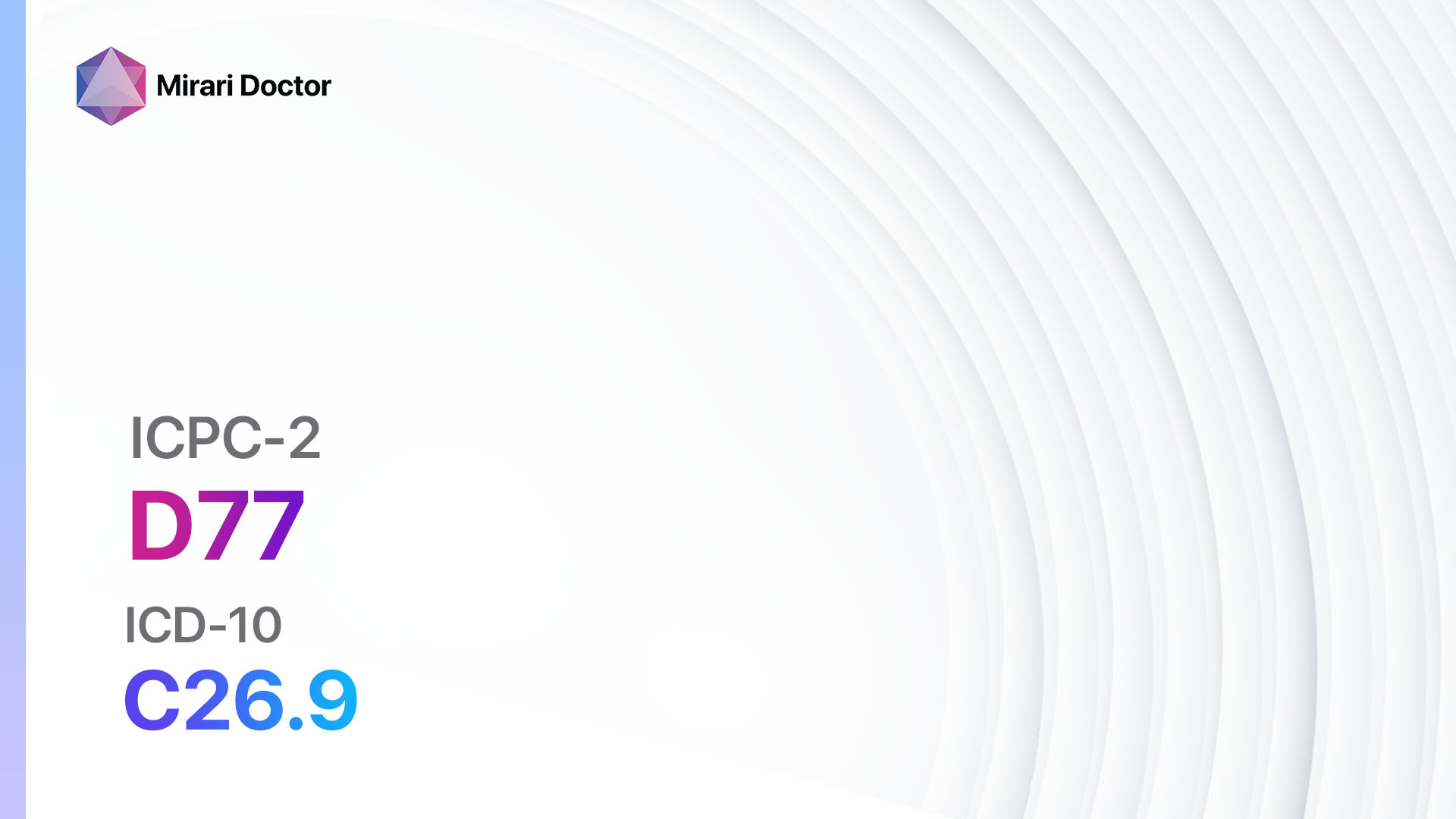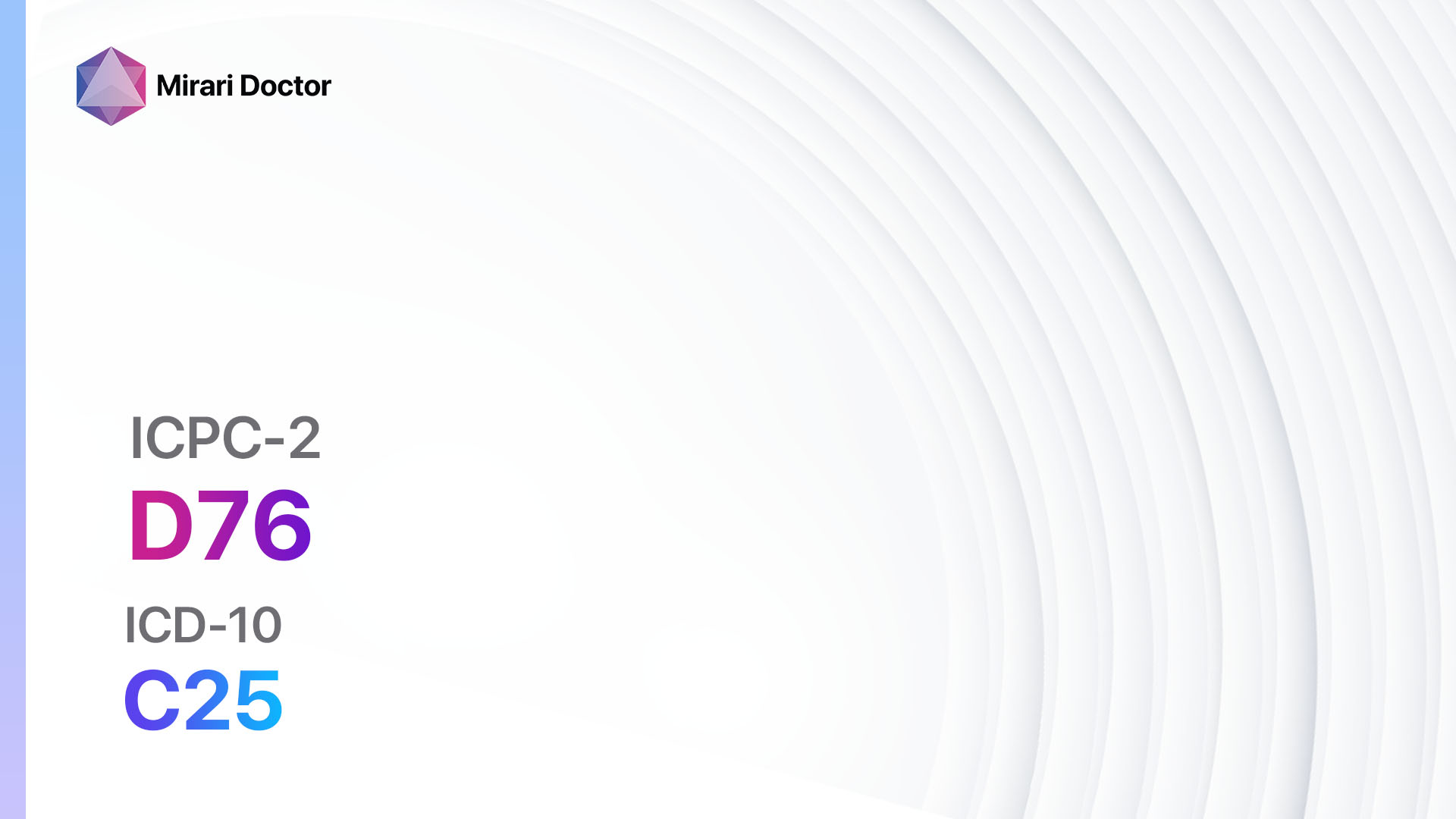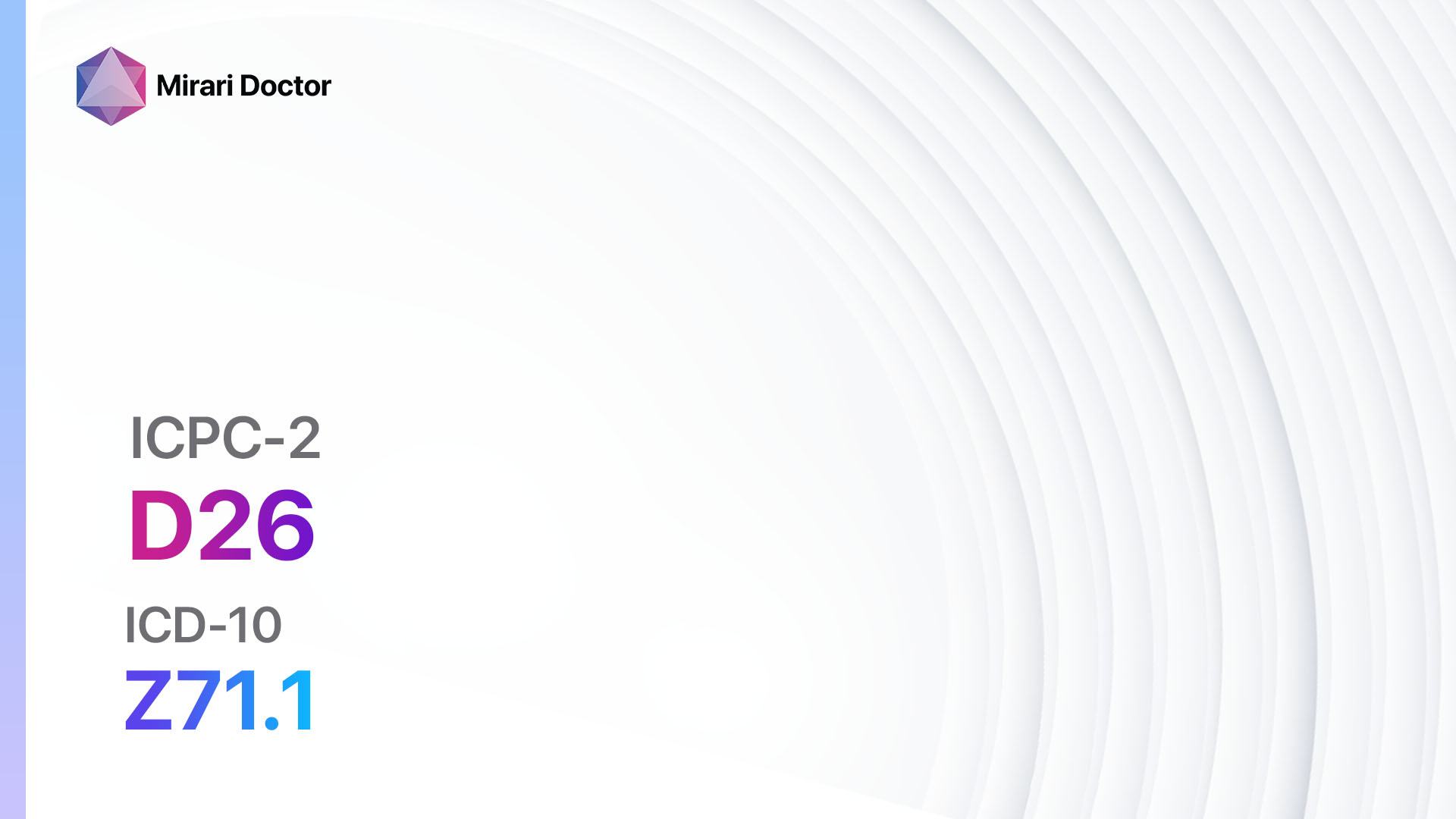
Introduction
Fear of cancer of the digestive system is a common concern among individuals. This guide aims to provide information on the symptoms, causes, diagnostic steps, possible interventions, and lifestyle changes that can help alleviate this fear. It is important to consult with a healthcare professional for a proper diagnosis and personalized treatment plan.
Codes
- ICPC-2 Code: D26 Fear of cancer of digestive system[1][2]
- ICD-10 Code: Z71.1 Person with feared complaint in whom no diagnosis is made[3]
Symptoms
- Persistent abdominal pain[4]
- Unexplained weight loss[4]
- Changes in bowel habits (diarrhea or constipation)[4]
- Blood in stool[4]
- Difficulty swallowing[4]
- Nausea or vomiting[4]
- Fatigue or weakness[4]
Causes
- Family history of digestive system cancer[5]
- Age (risk increases with age)[5]
- Smoking and tobacco use[5]
- Excessive alcohol consumption[5]
- Poor diet high in processed foods and low in fruits and vegetables[5]
- Chronic inflammation of the digestive system[5]
- Certain infections (e.g., Helicobacter pylori)[5]
Diagnostic Steps
Medical History
- Gather information about the patient’s risk factors, such as family history, smoking, alcohol consumption, and dietary habits.[6]
- Ask about the presence of symptoms and their duration.[6]
- Inquire about any previous medical conditions or treatments related to the digestive system.[6]
Physical Examination
- Perform a thorough physical examination, including palpation of the abdomen to check for any masses or tenderness.[6]
- Check for any signs of jaundice or enlarged lymph nodes.[6]
Laboratory Tests
- Complete blood count (CBC) to check for anemia or abnormal blood cell counts.[6]
- Liver function tests to assess liver health.[6]
- Stool tests to check for the presence of blood or abnormal cells.[6]
- Tumor marker tests, such as carcinoembryonic antigen (CEA) or CA 19-9, to evaluate for the presence of certain cancers.[6]
Diagnostic Imaging
- Upper gastrointestinal (GI) endoscopy to visualize the esophagus, stomach, and upper part of the small intestine.[6]
- Colonoscopy to examine the colon and rectum.[6]
- Computed tomography (CT) scan to obtain detailed images of the digestive system.[6]
- Magnetic resonance imaging (MRI) to assess the extent of the disease and detect any metastasis.[6]
- Ultrasound to evaluate the liver, gallbladder, and other abdominal organs.[6]
Other Tests
- Biopsy: A small tissue sample is taken for examination under a microscope to confirm the presence of cancer cells.[6]
- Genetic testing: In certain cases, genetic testing may be recommended to assess the risk of developing digestive system cancer.[7]
Follow-up and Patient Education
- Provide appropriate counseling and support to address the patient’s fear and anxiety.[8]
- Educate the patient about the importance of regular screenings and early detection.[8]
- Encourage a healthy lifestyle, including a balanced diet, regular exercise, and smoking cessation.[9]
Possible Interventions
Traditional Interventions
Medications:
Top 5 drugs for fear of cancer of the digestive system:
- Antianxiety medications (e.g., Alprazolam, Diazepam):
- Cost: Generic versions can be $3-$50/month.
- Contraindications: Allergy to benzodiazepines, severe respiratory insufficiency.
- Side effects: Drowsiness, dizziness, confusion.
- Severe side effects: Respiratory depression, paradoxical reactions.
- Drug interactions: Alcohol, opioids.
- Warning: May cause dependence and withdrawal symptoms.
- Antidepressants (e.g., Sertraline, Escitalopram):
- Cost: Generic versions can be $3-$50/month.
- Contraindications: Allergy to selective serotonin reuptake inhibitors (SSRIs), concurrent use of monoamine oxidase inhibitors (MAOIs).
- Side effects: Nausea, headache, sexual dysfunction.
- Severe side effects: Serotonin syndrome, suicidal thoughts.
- Drug interactions: MAOIs, certain pain medications.
- Warning: May take several weeks to show full effect.
- Cognitive-behavioral therapy (CBT): A form of psychotherapy that helps individuals identify and change negative thought patterns and behaviors associated with fear and anxiety.
- Cost: Varies depending on the therapist and location. Typically ranges from $100-$200 per session.
- Contraindications: None.
- Side effects: None.
- Severe side effects: None.
- Drug interactions: None.
- Warning: Requires commitment and active participation from the patient.
- Supportive therapy: Individual or group counseling sessions that provide emotional support and coping strategies for managing fear and anxiety.
- Cost: Varies depending on the therapist and location. Typically ranges from $50-$150 per session.
- Contraindications: None.
- Side effects: None.
- Severe side effects: None.
- Drug interactions: None.
- Warning: Requires commitment and active participation from the patient.
- Mindfulness-based stress reduction (MBSR): A program that combines mindfulness meditation, yoga, and body awareness to reduce stress and promote emotional well-being.
- Cost: Varies depending on the instructor and location. Typically ranges from $200-$500 for an 8-week program.
- Contraindications: None.
- Side effects: None.
- Severe side effects: None.
- Drug interactions: None.
- Warning: Requires commitment and regular practice.
Alternative Drugs:
- Herbal supplements: Certain herbs, such as chamomile and lavender, have calming properties and may help reduce anxiety. Cost: Varies depending on the specific supplement.
- Homeopathic remedies: Some homeopathic remedies, such as Aconitum napellus and Argentum nitricum, are believed to alleviate anxiety symptoms. Cost: Varies depending on the specific remedy.
Alternative Interventions
- Yoga: Combines physical postures, breathing exercises, and meditation to promote relaxation and reduce anxiety. Cost: $10-$20 per class or $50-$100 per month for unlimited classes.
- Meditation: Involves focusing the mind and eliminating the stream of thoughts to achieve a state of deep relaxation and inner peace. Cost: Free (can be practiced at home) or $10-$20 per class.
- Acupuncture: Involves the insertion of thin needles into specific points on the body to restore balance and promote overall well-being. Cost: $60-$120 per session.
- Massage therapy: Manipulation of soft tissues to promote relaxation and relieve muscle tension. Cost: $50-$100 per session.
- Exercise: Regular physical activity, such as walking, jogging, or swimming, can help reduce anxiety and improve overall mental well-being. Cost: Free (can be done at home or in public spaces) or $30-$100 per month for gym membership.
Lifestyle Interventions
- Healthy diet: Consuming a balanced diet rich in fruits, vegetables, whole grains, and lean proteins can support overall health and reduce the risk of developing digestive system cancer. Cost: Varies depending on individual food choices.
- Regular exercise: Engaging in regular physical activity can help reduce anxiety, improve mood, and promote overall well-being. Cost: Free (can be done at home or in public spaces) or $30-$100 per month for gym membership.
- Stress management techniques: Practicing stress management techniques, such as deep breathing exercises, mindfulness, and relaxation techniques, can help reduce anxiety and promote emotional well-being. Cost: Free (can be practiced at home) or $10-$20 per class for guided sessions.
- Avoidance of tobacco and alcohol: Quitting smoking and limiting alcohol consumption can significantly reduce the risk of developing digestive system cancer and improve overall health. Cost: Varies depending on individual habits.
- Support groups: Joining support groups or seeking social support from friends and family can provide emotional support and help alleviate fear and anxiety. Cost: Free (can be done online or in-person).
It is important to note that the cost ranges provided are approximate and may vary depending on the location and availability of the interventions. It is recommended to consult with healthcare professionals or therapists to determine the most suitable interventions and their associated costs.
Mirari Cold Plasma Alternative Intervention
Understanding Mirari Cold Plasma
- Safe and Non-Invasive Treatment: Mirari Cold Plasma is a safe and non-invasive treatment option for various skin conditions. It does not require incisions, minimizing the risk of scarring, bleeding, or tissue damage.
- Efficient Extraction of Foreign Bodies: Mirari Cold Plasma facilitates the removal of foreign bodies from the skin by degrading and dissociating organic matter, allowing easier access and extraction.
- Pain Reduction and Comfort: Mirari Cold Plasma has a local analgesic effect, providing pain relief during the treatment, making it more comfortable for the patient.
- Reduced Risk of Infection: Mirari Cold Plasma has antimicrobial properties, effectively killing bacteria and reducing the risk of infection.
- Accelerated Healing and Minimal Scarring: Mirari Cold Plasma stimulates wound healing and tissue regeneration, reducing healing time and minimizing the formation of scars.
Mirari Cold Plasma Prescription
Video instructions for using Mirari Cold Plasma Device – D26 Fear of cancer of digestive system (ICD-10:Z71.1)
| Mild | Moderate | Severe |
| Mode setting: 1 (Infection) Location: 2 (Prostate & Uterus) Morning: 15 minutes, Evening: 15 minutes |
Mode setting: 1 (Infection) Location: 2 (Prostate & Uterus) Morning: 30 minutes, Lunch: 30 minutes, Evening: 30 minutes |
Mode setting: 1 (Infection) Location: 2 (Prostate & Uterus) Morning: 30 minutes, Lunch: 30 minutes, Evening: 30 minutes |
| Mode setting: 1 (Infection) Location: 3 (Kidney, Liver & Spleen) Morning: 15 minutes, Evening: 15 minutes |
Mode setting: 1 (Infection) Location: 3 (Kidney, Liver & Spleen) Morning: 30 minutes, Lunch: 30 minutes, Evening: 30 minutes |
Mode setting: 1 (Infection) Location: 3 (Kidney, Liver & Spleen) Morning: 30 minutes, Lunch: 30 minutes, Evening: 30 minutes |
| Mode setting: 2 (Wound Healing) Location: 3 (Kidney, Liver & Spleen) Morning: 15 minutes, Evening: 15 minutes |
Mode setting: 2 (Wound Healing) Location: 3 (Kidney, Liver & Spleen) Morning: 30 minutes, Lunch: 30 minutes, Evening: 30 minutes |
Mode setting: 2 (Wound Healing) Location: 3 (Kidney, Liver & Spleen) Morning: 30 minutes, Lunch: 30 minutes, Evening: 30 minutes |
| Mode setting: 7 (Immunotherapy) Location: 1 (Sacrum) Morning: 15 minutes, Evening: 15 minutes |
Mode setting: 7 (Immunotherapy) Location: 1 (Sacrum) Morning: 30 minutes, Lunch: 30 minutes, Evening: 30 minutes |
Mode setting: 7 (Immunotherapy) Location: 1 (Sacrum) Morning: 30 minutes, Lunch: 30 minutes, Evening: 30 minutes |
| Total Morning: 60 minutes approx. $10 USD, Evening: 60 minutes approx. $10 USD |
Total Morning: 120 minutes approx. $20 USD, Lunch: 120 minutes approx. $20 USD, Evening: 120 minutes approx. $20 USD, |
Total Morning: 120 minutes approx. $20 USD, Lunch: 120 minutes approx. $20 USD, Evening: 120 minutes approx. $20 USD, |
| Usual treatment for 7-60 days approx. $140 USD – $1200 USD | Usual treatment for 6-8 weeks approx. $2,520 USD – $3,360 USD |
Usual treatment for 3-6 months approx. $5,400 USD – $10,800 USD
|
 |
|
Use the Mirari Cold Plasma device to treat Fear of cancer of digestive system effectively.
WARNING: MIRARI COLD PLASMA IS DESIGNED FOR THE HUMAN BODY WITHOUT ANY ARTIFICIAL OR THIRD PARTY PRODUCTS. USE OF OTHER PRODUCTS IN COMBINATION WITH MIRARI COLD PLASMA MAY CAUSE UNPREDICTABLE EFFECTS, HARM OR INJURY. PLEASE CONSULT A MEDICAL PROFESSIONAL BEFORE COMBINING ANY OTHER PRODUCTS WITH USE OF MIRARI[10].
Step 1: Cleanse the Skin
- Start by cleaning the affected area of the skin with a gentle cleanser or mild soap and water. Gently pat the area dry with a clean towel.
Step 2: Prepare the Mirari Cold Plasma device
- Ensure that the Mirari Cold Plasma device is fully charged or has fresh batteries as per the manufacturer’s instructions. Make sure the device is clean and in good working condition.
- Switch on the Mirari device using the power button or by following the specific instructions provided with the device.
- Some Mirari devices may have adjustable settings for intensity or treatment duration. Follow the manufacturer’s instructions to select the appropriate settings based on your needs and the recommended guidelines.
Step 3: Apply the Device
- Place the Mirari device in direct contact with the affected area of the skin. Gently glide or hold the device over the skin surface, ensuring even coverage of the area experiencing.
- Slowly move the Mirari device in a circular motion or follow a specific pattern as indicated in the user manual. This helps ensure thorough treatment coverage.
Step 4: Monitor and Assess:
- Keep track of your progress and evaluate the effectiveness of the Mirari device in managing your Fear of cancer of digestive system. If you have any concerns or notice any adverse reactions, consult with your health care professional.
Note
This guide is for informational purposes only and should not replace the advice of a medical professional. Always consult with your healthcare provider or a qualified medical professional for personal advice, diagnosis, or treatment. Do not solely rely on the information presented here for decisions about your health. Use of this information is at your own risk. The authors of this guide, nor any associated entities or platforms, are not responsible for any potential adverse effects or outcomes based on the content.
Mirari Cold Plasma System Disclaimer
- Purpose: The Mirari Cold Plasma System is a Class 2 medical device designed for use by trained healthcare professionals. It is registered for use in Thailand and Vietnam. It is not intended for use outside of these locations.
- Informational Use: The content and information provided with the device are for educational and informational purposes only. They are not a substitute for professional medical advice or care.
- Variable Outcomes: While the device is approved for specific uses, individual outcomes can differ. We do not assert or guarantee specific medical outcomes.
- Consultation: Prior to utilizing the device or making decisions based on its content, it is essential to consult with a Certified Mirari Tele-Therapist and your medical healthcare provider regarding specific protocols.
- Liability: By using this device, users are acknowledging and accepting all potential risks. Neither the manufacturer nor the distributor will be held accountable for any adverse reactions, injuries, or damages stemming from its use.
- Geographical Availability: This device has received approval for designated purposes by the Thai and Vietnam FDA. As of now, outside of Thailand and Vietnam, the Mirari Cold Plasma System is not available for purchase or use.
References
- ICPC-2 Codes – RxReasoner. https://www.rxreasoner.com/icpc2codes/component/S
- [PDF] ICPC-2 – English. https://www.gesy.org.cy/el-gr/annualreport/icpc-2-english1-10.pdf
- ICD-10-CM Diagnosis Code Z71.1 – Person with feared health …. https://icdlist.com/icd-10/Z71.1
- Stomach cancer – Symptoms and causes – Mayo Clinic. https://www.mayoclinic.org/diseases-conditions/stomach-cancer/symptoms-causes/syc-20352438
- Stomach Cancer: Causes, Symptoms, Diagnosis & Treatment. https://my.clevelandclinic.org/health/diseases/15812-stomach-cancer
- Stomach cancer – Diagnosis and treatment – Mayo Clinic. https://www.mayoclinic.org/diseases-conditions/stomach-cancer/diagnosis-treatment/drc-20352443
- Systematic review of factors influencing patient and practitioner …. https://www.ncbi.nlm.nih.gov/pmc/articles/PMC2361411/
- Carcinophobia (fear of cancer) – symptoms, causes and treatment. https://www.medicover.pl/en/cancers/carcinophobia-fear-of-cancer-symptoms-causes-and-treatment/
- Stomach Cancer: Symptoms, Causes, Diagnosis, Treatment – Health. https://www.health.com/stomach-cancer-7369990
- Lafaro, Kelly J. ; Melstrom, Laleh G. (2019). The Paradoxical Web of Pancreatic Cancer Tumor Microenvironment. The Paradoxical Web of Pancreatic Cancer Tumor Microenvironment
Related articles
Made in USA


